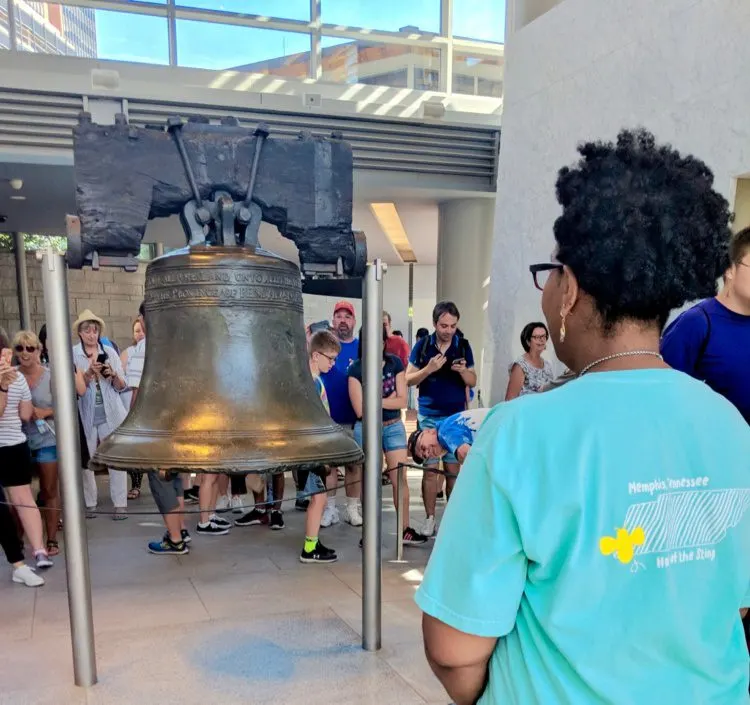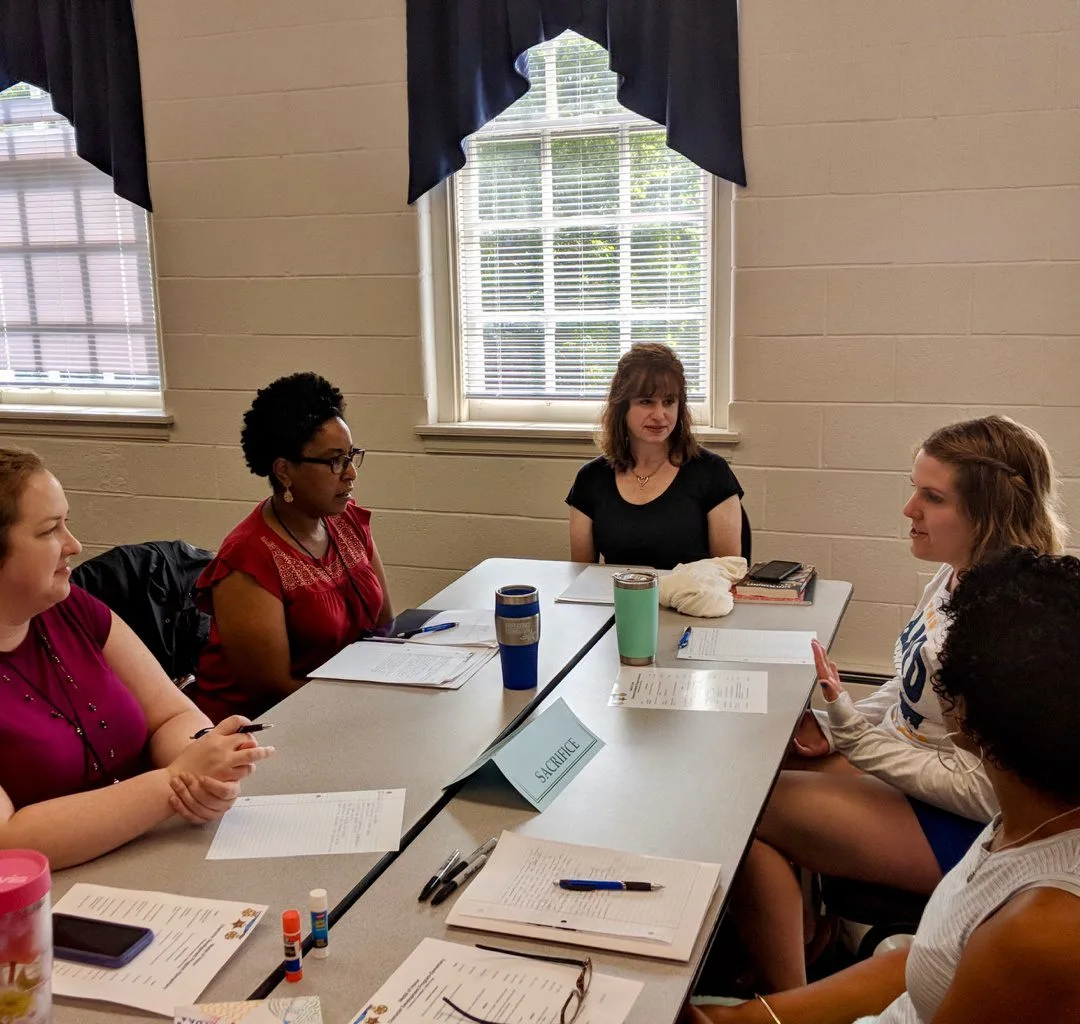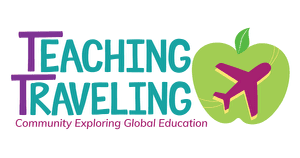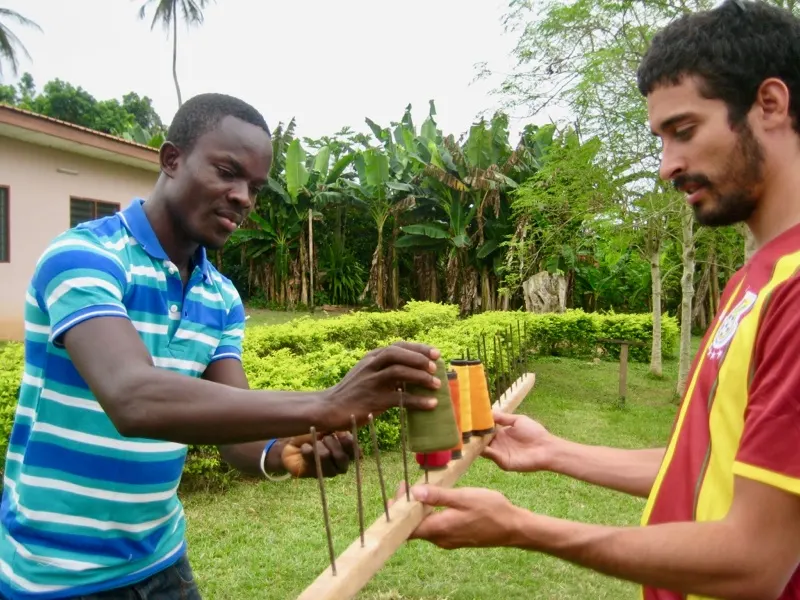Diversity matters in Global Education.
Hello! I’ve been running Teaching Traveling for 8 years now, and have published over 300 interviews with Teacher-Travelers. A concerning pattern has emerged, however, that I am hoping this article can be part of the movement to shift:
Teacher travel grant group participants are overwhelmingly white.
Educators of color are disproportionately NOT getting these incredible funded global education experiences.
What is going on? How can we fix this?
Let’s unpack this issue, piece by piece, in order to understand its importance, and take concrete action steps for change.
Thank you to the kind teachers who provided photos to accompany these words!
Q: Why should I care if there are educators of color selected for teacher travel grants?
A: It matters logically. When teacher travel grants don’t proactively seek inclusive groups, everyone loses.
For example, I have now heard several shocking stories of teacher professional development institutes that are discussing issues of race, U.S. History, and immigration with a room of only white educators — or one teacher of color in a sea of white faces.
How does that make logical sense?
How would it feel if you were the only woman in a room full of men discussing the history of women’s rights? What would be lost in that imbalance?
Further, inclusiveness doesn’t only matter in contexts that are explicitly about race and history. Diverse groups benefit everyone. A recent report released by Forbes revealed that racially diverse companies outperform homogenous ones by 35%!
The boons of inclusiveness apply to the teacher travel world as they do to business. For example, say you were doing a WWII study tour for educators. How would the discussion and learning be different if your group was all white women, versus a mix of genders, races, ages, and ethnicities?
Having a range of voices, background experiences, and knowledge enhances everyone’s experience.

Q: Are there numbers to support why it’s illogical for teacher travel grant groups to be mostly white?
A: Yes! In 2017, in the United States, about 80% of teachers were white, and each year that number is decreasing. That means that to merely match educator statistics, teacher travel grants should aim for at least 20% participants of color — yet few do.
Meanwhile, in America’s public schools in 2014, just 50% of students were white, and that percentage is decreasing steadily.
Paired with growing evidence that teachers of color have a markedly positive effect on the achievement of students of color, it is therefore vital for global education opportunities to be shared fairly across racial groups. The benefits positively influence both staff and students.

Unfortunately, evidence from eight years of researching this topic suggests that these teacher travel grants are repeatedly going to a small group of mostly white teachers.
Looking at the greater good, this is problematic. It reveals a major issue in how teacher travel grant participants are recruited and selected.
I love the organizations that run these grants, and I love the teachers who do them, so my purpose in writing this article is to draw attention to this important issue in order to rally our community and grant programs to address it.
By following some concrete action steps (coming later in this article!) to foster inclusiveness, teacher travel grant programs can have a markedly wider impact in the world.

Q: Ok, I’m convinced. But is it even possible for teacher travel grants to diversify participants?
A: YES. The Boston Teachers Union chapter of the amazing Fund For Teachers grant revamped its selection process when its leadership realized that there were strikingly few teachers of color selected for each yearly cohort of 20 to 30 grant recipients — and sometimes there were ZERO.
This year, since FFT Boston improved its selection process (concrete details about this in the next section of this article), a full ONE THIRD of their fellows are educators of color!
Please note that I said, “improved their selection process”. A classically problematic response to diversification efforts is, “Are you saying we should LOWER the standards for admission in order to get diverse candidates? Won’t that hurt the quality program? Haven’t we already been picking from the best people out there in the best possible way?”
NO. That is a racist idea, and you can follow that affiliate link to the excellent book, Stamped from the Beginning, which tackles the concept.

The participants of color who are Fund for Teachers fellows in Boston this year have stupendous, worthwhile projects, and the admission process was NOT “watered down” to add them.
Rather, the reason there were so few participants of color in earlier years — and why there are so few participants of color in other teacher travel grants — was because of biases and blind spots in how the opportunity was shared, and how the fellows were selected.
Dear organizations: Please understand how vitally important inclusiveness is. It’s got to matter and be a priority. Several programs have told me they are “colorblind” — but that is not enough.
Centuries of racism and oppression, paired with unintended (and sometimes intended) biases within the application and selection process, mean that organizations need to be PROACTIVE in creating inclusiveness.
Not addressing these biases — or pretending they don’t exist — doom programs to homogeneity… and everyone loses.

Q: Let’s get concrete! HOW can teacher travel grants diversify their participants?
A: Here are action steps to create racially inclusive teacher travel grant groups. In this section, I am directly speaking to teacher travel grant directors and committee members. Feel free to share this with those you know in that world! Even implementing one of these steps could make a difference.
1. Explicitly state that your grant is looking for, and is committed to, diversity in applicants and attendees. Because of ongoing racial discrimination, giving a clear commitment to inclusiveness is instrumental in encouraging applications.
2. Widely share the teacher travel grant opportunity in networks of educators of color. Do everything possible to get a large and vibrant applicant pool that reflects actual teacher diversity. Energetically partner with information channels and influencers that reach diverse educator groups.
There are a number of ways to do this, but it’s better to err on the side of being awkward and getting the word out, rather than being so nervous about doing it right that you don’t even try to circulate the grant beyond more homogenous circles.
3. Have a place in the application where applicants can put forth how they identify. One issue with creating diverse groups for teacher travel opportunities is that many applications don’t have a checkbox to clearly reveal race or ethnicity. If adding one is not an option, put questions that could lead the applicant to narratively state how they identify.
For example, one possible question could be, “How could you bring a unique perspective to this teacher travel opportunity?”
While many organizations are uncomfortable using this information to diversify their grantees, it could at the very least provide data for analysis of selection biases, and at best, help create groups with wide-ranging perspectives.
4. Provide application guidance. Part of what perpetuates racial inequality in teacher travel grants is that white teachers who have gotten the grants help other white teachers with their applications, while educators of color are left out of the inside information.
To combat this unfairness, FFT Boston ran a number of well-attended application support workshops for first-time applicants. Educators of color who had excellent ideas were supported with the “insider” tips, and the resulting applications were powerful.
5. Create diverse selection committees, and explicitly name and discuss bias with all committee members. Our biases are deep within us, and the odds of an all-white selection committee being drawn to applications from white educators is high. Therefore, FFT Boston actively sought out people from a diverse array of backgrounds to serve on its selection committee
It didn’t stop there, however. FFT Boston laid out the hard truth for the team: “Though many educators of color apply to Fund for Teachers, we have awarded a vanishingly small number of grants to those teachers. In some years, the number has been zero. The Boston Teachers Union is committed to advancing racial equity in our schools, in our union, and in our city, and this commitment must extend to our partnership with Fund for Teachers.”
Informational readings can help. By having the whole selection team read and discuss, “Is Your Bias Limiting You?” FFT Boston effectively coached its selection team to be self-aware and break the pattern of selection bias. What is great about that article is it emphasizes the benefits diverse teams have to everyone.

6. Double check what you’re valuing in an application. In your teacher travel grant screening committee, what are you ACTUALLY looking for? Examining this question helps root out biases and reveal candidates who truly match what your organization stands for.
FFT Boston shared a great example of this, regarding the section of its application which asks teachers to come up with their own travel project. In this example, take a look at two proposals:
In “Proposal A“, a white teacher explains she would use the grant to go to the Dominican Republic and learn about the culture of her students, of which she knows very little.
In “Proposal B“, a Dominican teacher explains he would use the grant to go back to the Dominican Republic for the first time since he was a kid, to reconnect with his roots and model for students how to embrace their own culture.
FFT Boston found that members of the selection committee, especially white readers, would often favor applications like Proposal A — white teachers wanting to learn about other cultures — but why? How is that more important that deepening a teacher’s understanding of his or her own culture to share with students?
Powerful questions. Figure out what your organization really wants to contribute to the world, and what it values, and take action from there.

7. Determine whether writing style is central to a winning application, and be clear about it. Let’s be real: For some teacher travel grants, writing deeply matters. For others, it does not. Yet writing style is often a gatekeeper for otherwise qualified applicants.
For example, FFT Boston took steps on both ends of the application process to ensure that qualified educators whose first language was not English weren’t being excluded.
The first way that FFT addressed this was by adding a writing support component to its application help workshops, and one on one supports for those who requested it.
Second, it openly discussed this with its selection committee, emphasizing, “This is not a writing contest!” Rather, for this particular grant, the most important elements are the ideas, actions, and impact — and so the selection process should match that.

8. Use the positive snowball effect. Here’s the good news: Once you start increasing inclusiveness, it becomes easier and easier. It builds on itself like a snowball racing down a hill, gathering mass.
Why is this? Role models are powerful. FFT Boston is counting on the idea that increased numbers of fellows of color will mean more diverse educators are seeing the grant, realizing it is open to inclusiveness, spreading the word, and applying. Hooray!
It is my sincere hope that other teacher travel grants will use some of these best practices, realizing how important diversity is for the good of our entire country and our world.

Q: I see! If I’m an educator who is a white ally, what can I do to help with inclusiveness in teacher travel grants?
A: When you see teacher travel grant opportunities, share them with as wide a variety of colleagues as you can, and encourage fellow educators from historically excluded groups to apply.
If you’ve already done a teacher travel grant, that means you likely have an “in” with that organization, which means it would be possible to contact them and put in a good word for a colleague who is applying. Experiment with ways to use your connections and influence to open the door for others.
Next, if you encounter an organization that says they are “colorblind” or they can’t do anything about making their grantees more diverse, use any of these arguments, statistics, or best practices to help them realize why that is not right.
Finally, if you hear people say that diversifying applicants means lowering the bar of applications and degrading the program, SAY SOMETHING. That is a racist and false idea, and there is plenty of proof as to why.

Q: Got it. Now, what can educators of color do to diversify teacher travel grant groups?
A: The majority of teacher travel grant organizations I talk to say, “We can’t proactively get diverse participant groups because we don’t know the races of the applicants.”
You can address this by making sure in your application to explicitly state that you will bring a perspective that has historically been missing from these opportunities.
Next: Understand that you are wanted and important. There is so much to gain from inclusiveness in teacher travel grant groups, so if you’re on the fence about filling out an application — or encouraging a colleague to do so — go ahead and get it done!
The world needs you.
In closing…
Sometimes we’re lulled into thinking that we live in a post-racial world and that everything is equal and fine, but it’s not. It is going to take proactive, positive work from all of us to fix the unfair, illogical, and destructive imbalance in teacher travel grant awardees.
I look forward to reading your comments about YOUR thoughts and experiences on this topic, as well as other constructive tips on best practices to increase inclusiveness in global education opportunities.
Thanks for reading, commenting, and sharing!


The author, Lillie Marshall, is a 6-foot-tall National Board Certified Teacher of English from Boston who has been a public school educator since 2003. She launched TeachingTraveling.com in 2010 to share expert global education resources, and over 1.6 million readers have visited over the past decade. Lillie also runs AroundTheWorld L.com Travel and Life Blog, and DrawingsOf.com for educational art. Do stay in touch via subscribing to her monthly newsletter, and following @WorldLillie on social media!






Greg Hill
Thursday 18th of October 2018
As a melanated teacher, I had to forge my way into the circles in which these opportunities were circulated. I have spoken with several melanated teachers (or teachers of color) who knew absolutely nothing about these opportunities. Great article
Lillie Marshall
Friday 19th of October 2018
Thank you so much for sharing some of your experiences, Greg! Hoping that information about these grants will start to be shared more equitably.
Katie
Sunday 14th of October 2018
Great article Lillie! I also think that teachers of color have a positive impact on white student achievement as well as students of color. I know that I’ve seen this and here’s is a link to article that backs that up. https://www.educationdive.com/news/educators-of-color-bring-numerous-benefits-to-students-while-facing-daily-c/524544/
Lillie Marshall
Sunday 14th of October 2018
Such an important point, Katie! We ALL need educators of color (in teacher travel grants, in schools, and beyond)! Diversity benefits everyone.
Tara Thomas
Sunday 14th of October 2018
Thanks for shining a light on this concern and backing it up with some great research. I am honored that I was able to share some pics for this article. I will share this info. with other educators. Thanks again!
Lillie Marshall
Sunday 14th of October 2018
Thank you so much for your contributions to this article, and for all you do every day!
Line Marshall
Sunday 14th of October 2018
Thanks for this important post, Lillie. Having been the one, or one of the very few, teachers of color on the teacher study tours in which I’ve been a participant, I can attest to the importance of representation. Teachers of color often teach children of color and through their own global learning experiences can broaden the worlds, minds, and possibilities of their students. In my high school English classes, this has manifested in my students learning everything from Shakespeare, as taught to me by world-class actors at Shakespeare’s Globe in London, to Afro-Cuban Orisha dances as I learned them from Cuba’s national folkloric ensemble. These lessons and experiences, when facilitated by a teacher who looks like them, offer students the chance to see themselves exploring and thriving in a world that’s warm, welcoming, and filled with people who are just like them in every way that matters.
Deborah Thomas
Monday 29th of June 2020
Excellent article. I was awarded a Fund for Teacher grant almost 15 years ago. My desire was to go to a week long workshop in Florida located on Disneyworld. It was a Cooperative Learning Summer Institute. I remember writing that I wanted more training so that I could train other teachers in what I had found to make my job easier and effortlessly as a teacher. Yes, I had the opportunity after that to be an Instructional Coach in Math, Reading, and Science for 11 years to teachers. I thought to myself when other teachers said that they were frustrated at times with behaviors in the classroom, yet I didn't have this problem and was having too much fun...almost feeling a little guilt. So, basically, I wanted as many opportunities to train teachers in order for this to be my "In" to help teachers know that one way to eliminate behavior issue could be through the avenue of student engagement. Yes, I'm very glad I had the opportunity to receive a teacher travel grant as this was the first time I had even heard of certain travel grants. The funny thing about that (being African American) I was telling every teacher I would run into about Fund for Teachers and 99% had never heard of it. These grants are surely important and need to be advertised and available to all.
Lillie Marshall
Sunday 14th of October 2018
So powerfully explained! Than you for taking the time to comment and share what you have experienced and seen!
Christian Scott
Saturday 13th of October 2018
I've done a number of teacher institutes and for me one of the unadvertised benefits was getting to know educators of color on a personal level. I work in an urban district with a diverse team, but we don't have a lot of downtime together. Relationships with other teachers are the most lasting takeaways from these programs.
Lillie Marshall
Saturday 13th of October 2018
Such a great point, Christian! Bonds of friendship formed on these trips are magical!